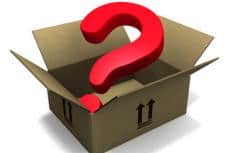 If you’ve been on the internet for any amount of time at all, you’re probably familiar with the famous “Error 404”. It can get frustrating when you’re trying to find information on something, click a link, and then wind up on a 404 page (unless the website admin has a sense of humor).
If you’ve been on the internet for any amount of time at all, you’re probably familiar with the famous “Error 404”. It can get frustrating when you’re trying to find information on something, click a link, and then wind up on a 404 page (unless the website admin has a sense of humor).
Why You Should Care About 404 Errors
Today, we’re going to dig a little bit deeper into this and talk about why the 404 error is a valuable tool and how a 404 error can help your site run better, rank better, and make more money.
What does “Error 404” mean?
A 404 Error is generated when an expected resources is not found at a given URL. An example of this (and probably the most common one) is when you click a link on a site like this:
http://thesugarbuzzproject.net/page_you_want_to_see.php
…and page_you_want_to_see.php has either been not created or removed by the administrator of the site. Also, the thing you’re looking for might actually be there, but you may have made a typo in the URL (if you manually typed in the address). Either way, the end result is that the browser can’t find what it was told to find, so you get sent to a 404 page.
But you knew all of this already, didn’t you? For the end user, it’s annoying. For the webmaster, these errors can give you a wealth of information that you can use to better your site.
Why is a 404 error valuable?
A 404 error is something that should not be overlooked by a webmaster. Most web hosts will give you access to log files in your CPanel so that you can see what errors are being generated. A couple of the things that 404 logging can tell you include:
- broken internal links
- broken external links
- security concerns that need to be addressed
- lost traffic that can be redirected
Now, let’s break these down individually.
Broken Links are Bad
According to Google’s algorithm, internal links are a good thing. Whenever you write a solid blog post, you should always link to your other supporting content. Google likes this. Readers also like this generally. BUT…if you make a typo, your reader is going to get slapped with an error rather than reading your awesome content. There’s no faster way to lose readers than to get sloppy with internal linking.
The same also goes for external links…backlinks are good. Broken back links never pass any SEO juice because the spiders don’t know where to pass it.
The errors in your 404 logging tools can help you spot and fix these broken links quickly.
Hackers are Actually a Thing
I think a lot of people don’t bother thinking about all of those other URLs in the 404 log files…if you see a list of non-content addresses on your site coming from the same IP address, then you may have a problem. Often, this means someone is either manually entering, or more likely running a tool, addresses of things that could have security issues looking for vulnerabilities. Once they find these vulnerabilities, they can unleash the spam session from hell on your site. Or worse…delete all of your site stuff (which has happened to me…and it’s one of the most horrible feelings ever).
If you aren’t running security tools on your site, you should be. And if you think you don’t have any issues…just look at your 404 log file. You might be very surprised.
Get Your Lost Traffic Back
This is probably my favorite thing about 404 errors…they can help you make more money.
How? Easy. When you’re looking at your log, you’ll probably notice that people are getting to older, depreciated tags that don’t exist, URLs that have changed, etc.
Keep this in mind: let’s say you’ve ranked in Google for a keyword, but then someone clicks on the link and gets that error. Odds are, they’re going to either hit the back button, or they’re just going to close the window. You’ve just lost that potential customer. Way to go.
But you don’t have to lose the next one.
What you need to do is redirect the URL that wasn’t found to one that IS available (I like the plugin Redirection for WordPress…it handles both logging AND redirection, and it’s super easy to use. And it’s free).
What will that do? It will let people land on the page you want them to land on rather than the broken link they are looking for. So if you have a URL that’s giving an error like:
http://thesugarbuzzproject.net/amazon_is_great.php
You can send it to something that DOES exist…like http://thesugarbuzzproject.net/find-discounted-products-amazon/ where people can actually see your affiliate links and use them.
Losing traffic is bad. Keeping traffic and getting it to your landing pages is great.
If you care about your website, you should take steps to avoid 404 errors as it affects your SEO badly.
That’s very true. But most people will have them at some point…and that’s really what this is about. They’re more than just broken links…they’re valuable information.